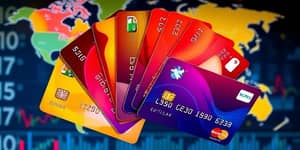
Managing finances across multiple accounts can feel like juggling at a circus: too many balls, constantly in motion, and no clear view of where they’ll land. In an era where digital wallets, investment apps, and subscription services coexist side by side, tracking every dollar manually is both time-consuming and error-prone. A budgeting app that syncs seamlessly with all your financial platforms offers more than convenience; it provides a comprehensive narrative of your money’s journey. By harnessing automation, real-time updates, and intuitive design, you can unlock clarity, curb impulsive spending, and strategically channel resources toward what matters most.
From recent college graduates building their first credit history to seasoned investors managing diverse portfolios, the ability to see every transaction in one place spawns a profound sense of control. Rather than chasing receipts and reconciling spreadsheets, you gain the freedom to focus on goals—whether that’s paying off student loans, saving for a first home, or diversifying retirement investments.
A unified financial dashboard transforms scattered data points into a coherent story. Picture a single screen where your checking account balance sits next to your credit card statement, your mortgage payment schedule aligns with upcoming subscription renewals, and your brokerage holdings update automatically with the market’s latest movements. This holistic view fosters comprehensive spending and income tracking and reveals patterns you might never catch by manually flipping between apps.
For example, a young professional might discover that her streaming subscriptions and food delivery services account for an unexpected share of her disposable income. At the same time, a retiree may monitor dividends and contributions to optimize cash flow without dipping into principal. Whether you’re an entrepreneur managing payroll and expenses or a freelancer balancing irregular revenue, seeing everything together prevents financial blind spots.
Key benefits of a unified approach include:
Not all budgeting apps are created equal. When evaluating platforms, consider the depth and breadth of their syncing capabilities. Leading solutions connect to banks, credit cards, loans, retirement accounts, investments, and even cryptocurrency exchanges. They categorize transactions automatically, applying rules and machine learning to group expenses into rent, utilities, groceries, or entertainment without manual entries.
Other essential attributes include:
A truly premium app offers fully automated account syncing feature, ensuring each new transaction appears without delay. Coupled with flexible expense categorization templates, these tools let you tailor the system to your lifestyle and financial literacy. Look for apps that allow multi-user access if you share finances with a partner or household member.
Choosing the right app often comes down to balancing cost, complexity, and compatibility. Below is a concise comparison of three standout platforms:
Monarch Money excels in customization and collaborative dashboards, making it ideal for couples or small business owners. YNAB’s zero-based approach demands a more hands-on engagement but rewards users with disciplined spending habits. Empower, at no cost, delivers robust investment and retirement projections for long-term planners. Beyond these options, Rocket Money, PocketGuard, and EveryDollar offer specialized features like bill negotiation services, debt payoff strategies, and saving challenges.
With sensitive financial data at stake, ensure your chosen app employs data encryption with two-factor authentication, ISO-certified compliance, and regular security audits. Review privacy policies for data-sharing practices, especially if a free tier monetizes insights through aggregated analytics.
Subscription fees vary widely—from free basic plans to annual memberships exceeding $100. Evaluate whether premium features, such as detailed reporting, priority customer support, or multi-user collaboration, justify the cost. Many apps offer trial periods ranging from seven days to a full month, allowing you to test syncing reliability, interface clarity, and customer service responsiveness before committing.
When possible, run parallel trials to compare dashboards side by side. Pay close attention to the onboarding process—how easy it is to import past transactions, set up budget categories, and link new accounts without technical hiccups.
Once you’ve selected an app, invest time in a thorough initial setup. Link every financial account you use, then retrofit categories for existing transactions to establish consistent patterns. Allocate budgeted funds for essentials first—housing, utilities, loans—then distribute discretionary spending across dining, travel, and lifestyle categories.
Activate custom notifications for bill due dates and overspending thresholds, and schedule a monthly review session. During these sessions, analyze shifts in spending behavior, adjust budget targets, and celebrate progress—no matter how small. Building positive reinforcement helps transform budgeting from a chore into a sustainable habit.
Consider the experience of Mark, a young entrepreneur managing business and personal expenses. By centralizing all accounts in one app, he identified that customer refunds were improperly categorized, skewing his profit margins each month. Correcting these classifications led to clearer financial statements, enabling him to secure a line of credit with favorable terms.
A budgeting app that syncs with all financial platforms is more than a digital ledger; it’s a strategic companion on your journey toward financial mastery. By embracing automated syncing, intuitive categorization, and comprehensive dashboards, you transform scattered data into actionable insights. Evaluate features, security measures, and cost structures, then take advantage of free trials to find your perfect match. With the right tool in hand, you’ll gain the clarity and confidence to steer your finances toward lasting stability and growth.
References













